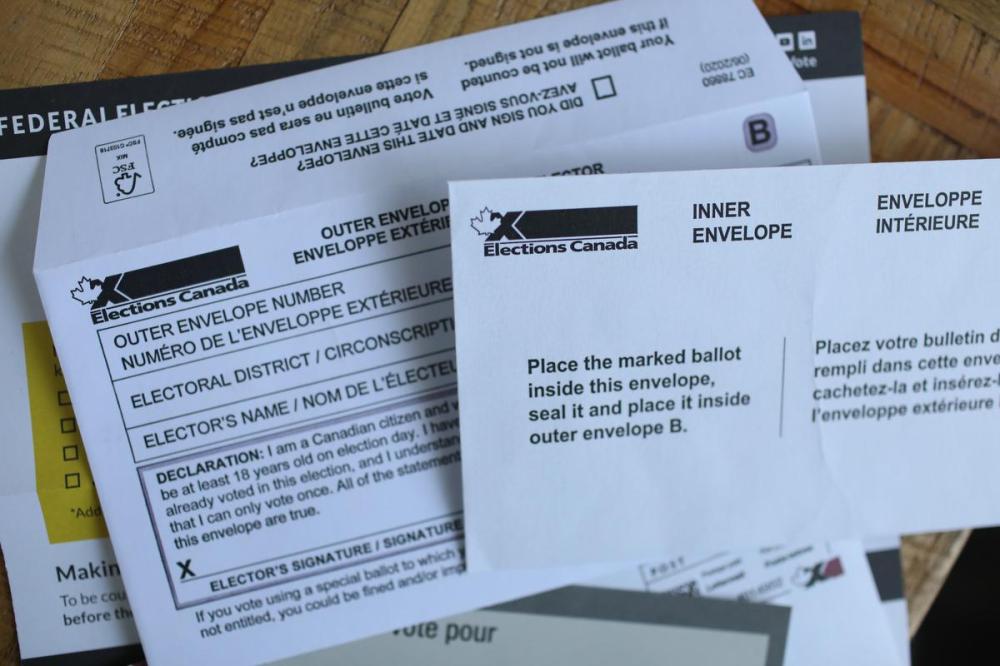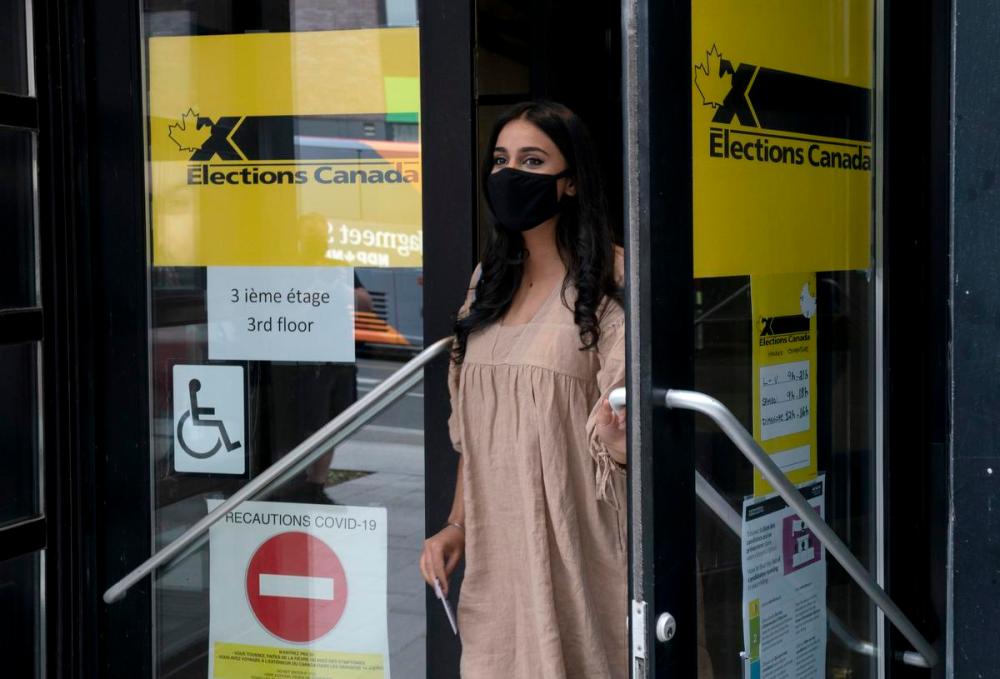Voting by mail? It’s not easy as you might think
Advertisement
Read this article for free:
or
Already have an account? Log in here »
To continue reading, please subscribe:
Monthly Digital Subscription
$0 for the first 4 weeks*
- Enjoy unlimited reading on winnipegfreepress.com
- Read the E-Edition, our digital replica newspaper
- Access News Break, our award-winning app
- Play interactive puzzles
*No charge for 4 weeks then price increases to the regular rate of $19.00 plus GST every four weeks. Offer available to new and qualified returning subscribers only. Cancel any time.
Monthly Digital Subscription
$4.75/week*
- Enjoy unlimited reading on winnipegfreepress.com
- Read the E-Edition, our digital replica newspaper
- Access News Break, our award-winning app
- Play interactive puzzles
*Billed as $19 plus GST every four weeks. Cancel any time.
To continue reading, please subscribe:
Add Free Press access to your Brandon Sun subscription for only an additional
$1 for the first 4 weeks*
*Your next subscription payment will increase by $1.00 and you will be charged $16.99 plus GST for four weeks. After four weeks, your payment will increase to $23.99 plus GST every four weeks.
Read unlimited articles for free today:
or
Already have an account? Log in here »
Hey there, time traveller!
This article was published 10/09/2021 (1561 days ago), so information in it may no longer be current.
Elections Canada was bracing for a slew of mail-in ballots, but despite the added safety of voting from home during the pandemic, the process may be deterring some people.
You have to apply to get your mail-in ballot for the federal election. And then there’s the ballot itself. Mail-in ballots are also known as special ballots, and are different from those ballots used on election day. They take more work to fill out and submit.
The more familiar election-day ballot has a list of candidates, along with their party if applicable, and a voter checks the box beside a name. Anyone mailing in their vote gets a ballot with no names and a place to write in their choice of candidate — writing in the party name won’t be accepted by Elections Canada. Plus, there is a series of envelopes that must be used in a specific order to submit a mail-in ballot.

Elections Canada spokesperson Nathalie de Montigny said the reason for the fill-in-the-blank process is special ballots are available for voters as soon as the election is called, but the deadline for all candidates to register falls after that. This time around the election was called Aug. 15 with candidates required to register by Aug. 31.
Figuring out whose name to write on the ballot could be problematic. Voters can look up their candidates online, call the Elections Canada hotline, or look for election signs in their neighbourhoods, but internet access may not be reliable, or accessible, and there may be other barriers, like language.
Elections Canada was expecting between two and three million special ballots to be cast. As of Friday at 5 p.m., it had issued nearly 800,000. The deadline to apply for a mail-in ballot is Sept. 14 by 6 p.m.
Noor Din founded Human Endeavour, a Vaughan-based community organization that serves seniors, many of whom are immigrants.
Anticipating questions from members, Din went through the process of applying for a mail-in ballot. It took about an hour navigating the site and a call to the Elections Canada hotline to get it figured out.
But he can already see what challenges others will face, especially seniors, or someone for whom English or French is not a first language.
A mail-in voting kit includes the ballot and three envelopes that must be assembled Russian-doll-style: The ballot goes into an inner envelope, that package goes into an outer envelope, which must be signed and dated, and the whole thing goes into the prepaid mailing envelope.
“There are four steps in just completing this ballot,” Din said, and even with a friend or family member’s help, a mistake could be made, wasting the ballot.
Din said he’s already had calls from seniors trying to figure out which polling stations will be open. Some locations that have hosted polls in the past have opted not to because the organizations that run them are concerned about COVID-19.
The mail-in process could help vulnerable populations who feel safer staying home to vote. But voting in person is more streamlined, and election workers are on hand for questions.

The hurdles with mail-in voting create “a much higher cost to voting,” said Daniel Rubenson, a politics professor at Ryerson University.
The “costs” Rubenson refers to include the time voters spend gathering information on the issues and processes required to cast a ballot. Add in the need to track down and recall a candidate’s name and the cost to vote starts to climb.
“We want everybody who wants to vote and is eligible to vote to be able to do so as easily as possible,” he said.
If you are voting from inside your riding, you can mail your ballot, drop it off at your local Elections Canada office, or drop it off at your polling station, but it has to be received by Elections Canada by the time polls close on election day. If you are voting from outside your riding, your mail-in ballot needs to reach Elections Canada by 6 p.m. ET Sept. 20. More information can be found on the Elections Canada website.
Clarification — Sept. 13, 2021: The final paragraph of this story has been updated to clarify the time mail-in ballots must be received.
Angelyn Francis is a Toronto-based reporter for the Star covering equity and inequality. Reach her via email: afrancis@thestar.ca


















